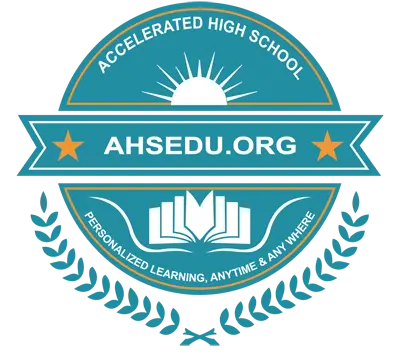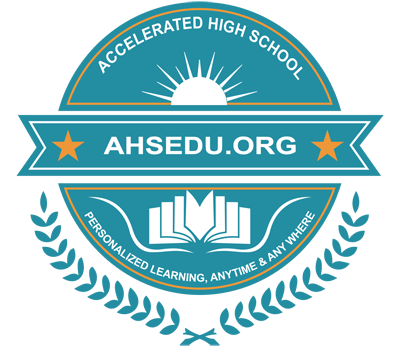Standardized Curriculum of Arts and Humanities-VI
In today’s creative world, arts and humanities help us see, imagine, and understand life in new ways. For Grade 6 students, this subject is not just about drawing pictures or reading stories — it’s about exploring ideas, asking big questions, and expressing themselves through different forms. By learning visual arts, literature, history, culture, philosophy, and media, students discover how people across time and places have shared beauty, meaning, and values. These skills encourage creativity, critical thinking, and empathy, preparing students to appreciate diversity, connect with others, and use their voices to make a positive impact in their communities and the world.
Mission:
Arts and Humanities education provides students with opportunities to explore creativity, culture, and human expression across time and place. Through visual arts, literature, history, philosophy, and media, students develop imagination, critical thinking, and communication skills. By engaging with diverse traditions, stories, and ideas, they gain a deeper appreciation of beauty, meaning, and values in everyday life. These experiences prepare them to express themselves confidently, respect cultural diversity, and contribute thoughtfully to their communities and the wider world.
Vision:
This course is designed to help students explore creativity, culture, and human expression while making meaningful connections between art, history, and everyday life. Through interactive lessons and hands-on projects, students will:
- Understand what Arts and Humanities are and why they matter in shaping human experience.
- Learn the elements of art (line, shape, color, texture, form, space) and principles of design (balance, contrast, rhythm, unity, emphasis) to create visual expression.
- Explore the lives and works of famous artists while practicing creative techniques such as drawing and digital collage.
- Read myths, fables, and folktales from different cultures, and practice creative writing through poetry, short stories, and comic strips.
- Discover how ancient civilizations such as Egypt, Greece, China, and the Indus Valley expressed culture through art and symbols.
- Examine traditions, festivals, and cultural celebrations around the world, and present findings through posters or digital presentations.
- Engage with big questions of philosophy and ethics—what is right and wrong, and why respect, kindness, and fairness matter—while learning about great thinkers like Socrates, Confucius, and Rumi.
- Practice reflection and dialogue through journaling, online debates, and classroom discussions.
- Study modern arts and media, including photography, graphic design, movies, and animation, while creating digital posters, infographics, or photo stories.
- Build media literacy by exploring how advertisements shape opinions, how to identify fake news, and how to create digital newsletters or blogs.
- Experience global arts and culture by exploring art across continents, visiting world heritage sites virtually, and curating a virtual museum.
- Investigate careers in arts and humanities, from artists and writers to historians and curators, and prepare career profile presentations.
- Complete a capstone project that combines creativity and technology, such as a digital storybook, multimedia presentation, or online exhibition.
Spirit and Intent:
The Grade 6 Arts and Humanities curriculum at AHS is designed to nurture creativity, cultural awareness, and critical expression, aligning with global standards for a well-rounded education. Students explore the foundations of arts and humanities by understanding the elements of art, principles of design, and the differences between art, culture, and history. They engage with myths, fables, and folktales, while practicing poetry, storytelling, and creative writing through both traditional and digital formats. By studying the art and traditions of ancient civilizations such as Egypt, Greece, China, and the Indus Valley, as well as cultural symbols, festivals, and celebrations from around the world, students gain insight into how human societies express meaning, values, and identity.
At its core, the curriculum emphasizes inquiry, creativity, and reflection. Students are introduced to philosophy and ethics through timeless questions of right and wrong, guided by thinkers such as Socrates, Confucius, and Rumi. They investigate the role of modern arts and media—photography, graphic design, movies, and animation—while learning how to navigate media responsibly by distinguishing reliable information from misinformation. Through global explorations, projects, and virtual museum experiences, students develop appreciation for cultural diversity and human achievements. The curriculum concludes with a capstone project that integrates art, writing, and digital media, encouraging students to showcase their talents, reflect on their learning, and envision future careers in the arts and humanities.
Curriculum for Grade-VI Arts and Humanities
Standard 1: Foundations of Arts and Humanities
Learning Objectives:
- Define arts and humanities and explain their role in shaping human experiences across time and place.
Differentiate between art, culture, and history, and analyze how they connect to identity and society. - Evaluate the importance of arts and humanities in fostering creativity, empathy, and critical thinking.
Topics of AHS-AH:
Introduction to Arts and Humanities
- What are Arts and Humanities?
- Difference between Art, Culture, and History
- Why Arts and Humanities are important in life
Standard 2: Visual Arts and Design
Learning Objectives:
- Analyze the elements of art (line, shape, color, texture, form, space) and apply them in creative projects.
- Evaluate the principles of design (balance, contrast, emphasis, rhythm, unity) in artworks.
- Examine the contributions of famous artists and their impact on art history.
- Create original works using both traditional drawing and digital collage tools.
Topics of AHS-AH:
Visual Arts
- Elements of Art (line, shape, color, texture, form, space)
- Principles of Design (balance, contrast, emphasis, rhythm, unity)
- Famous Artists and Their Work
- Creative Practice: Drawing and Digital Collage (using online tools)
Standard 3: Literature and Creative Writing
Learning Objectives:
- Explore myths, fables, and folktales to understand cultural values and storytelling traditions.
- Identify the key features of poetry, including rhyme, imagery, and emotional expression.
- Analyze storytelling techniques such as character, setting, and plot.
- Develop original creative works such as poems, short stories, and comic strips for digital submission.
Topics of AHS-AH:
Literature and Creative Writing
- Reading Myths, Fables, and Folktales (digital texts)
- Poetry Basics (rhyme, imagery, feelings)
- Storytelling Techniques (characters, setting, plot)
- Creative Writing Practice: Poem, Short Story, Comic Strip (online submission)
Standard 4: History and Culture
Learning Objectives:
- Examine the art and cultural traditions of ancient civilizations, including Egypt, Greece, China, and the Indus Valley.
- Interpret cultural symbols and traditions to understand identity and shared values.
- Investigate how festivals and celebrations reflect community and cultural heritage.
- Present research on cultures and traditions using posters or digital presentations.
Topics of AHS-AH:
History and Culture
- Ancient Civilizations and their Art (Egypt, Greece, Indus Valley, China)
- Cultural Symbols and Traditions
- Festivals and Celebrations around the World
- Exploration Project: Posters or Digital Presentations on Culture/Festival
Standard 5: Philosophy and Ethics
Learning Objectives:
- Explore fundamental ethical questions about right and wrong in personal and social life.
- Analyze the importance of respect, kindness, and fairness as universal values.
- Recognize the ideas of great thinkers such as Socrates, Confucius, and Rumi in simplified contexts.
- Engage in reflective practices through online debates, journaling, and class discussions.
Topics of AHS-AH:
Philosophy and Ethics (Introductory)
- What is Right and Wrong?
- Respect, Kindness, and Fairness
- Famous Thinkers in Simple Words (Socrates, Confucius, Rumi)
- Classroom Practice: Online Debates, Journaling, and Reflection
Standard 6: Modern Arts and Media
Learning Objectives:
- Understand photography basics and apply them to visual storytelling.
- Explore the fundamentals of digital art and graphic design using online tools.
- Analyze movies and animations as artistic forms of expression.
- Create digital media projects such as posters, infographics, and photo stories.
Topics of AHS-AH:
Modern Arts and Media
- Photography Basics (angles, light, storytelling)
- Digital Art and Graphic Designing Basics (Canva, Google Draw, etc.)
- Movies and Animation as Art
- Creative Media Project: Digital Poster, Infographic, or Photo Story
Standard 7: Media Literacy and Communication
Learning Objectives:
- Define media and compare types such as print, digital, and social media.
- Evaluate the influence of advertisements on individual and group decisions.
- Distinguish between reliable news sources and misinformation.
- Apply communication skills by creating a mini online newsletter or blog.
Topics of AHS-AH:
Media Literacy and Communication
- What is Media? (print, digital, social)
- How Advertisements Influence Us
- Fake News vs Reliable Information
- Student Project: Create a Mini Online Newsletter or Blog
Standard 8: Global Arts and Culture
Learning Objectives:
- Compare artistic traditions from Africa, Asia, Europe, and the Americas.
- Explore World Heritage Sites through digital platforms to understand global cultural heritage.
- Research cultural exchanges involving food, music, and clothing.
- Develop and present a virtual museum or digital exhibit showcasing global culture.
Topics of AHS-AH:
Global Arts and Culture
- Art from Different Continents (Africa, Asia, Europe, Americas)
- World Heritage Sites (virtual exploration with Google Arts & Culture)
- Cultural Exchange: Exploring Food, Music, Clothing through Digital Research
- Project: Create a Virtual Museum/Exhibit Presentation
Standard 9: Careers in Arts and Humanities
Learning Objectives:
- Identify career pathways in visual arts, writing, communication, culture, and history.
- Analyze the skills and responsibilities of professionals such as graphic designers, authors, journalists, historians, and curators.
- Create career profile presentations to connect personal interests with future opportunities.
Topics of AHS-AH:
Careers in Arts and Humanities
- Jobs in Visual Arts (graphic designer, illustrator, photographer)
- Jobs in Writing and Communication (author, journalist, scriptwriter)
- Jobs in Culture and History (historian, curator, anthropologist)
- Project: Create a Career Profile Presentation
Standard 10: Capstone Project
Learning Objectives:
- Synthesize knowledge and skills from across the curriculum into a creative final project.
- Apply digital tools to produce multimedia presentations, storybooks, or virtual exhibitions.
- Collaborate and showcase projects in an online exhibition format.
Topics of AHS-AH:
Capstone Project
- Illustrated Digital Storybook (Art + Writing)
- Digital Presentation on Culture or History Topic
- Multimedia Project (Digital Art + Recorded Voice/Background Music)
- Final Showcase: Online Exhibition/Presentation







